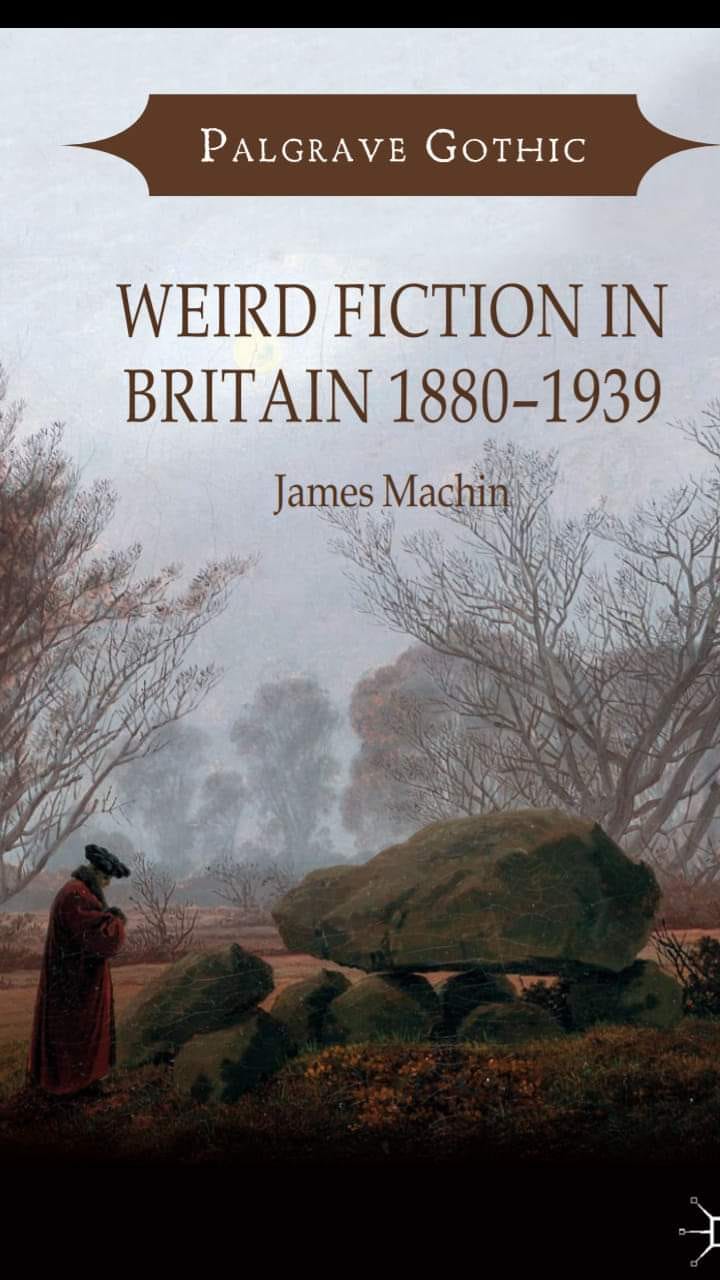The context of horror fiction in the fin-de-siècle
Weird Fiction in Britain 1880–1939 (2018) by James Machin
....Several convergent factors precipitated a publishing boom in the closing decades of the nineteenth century. One of the most prominent was the 1870 Education Act, which considerably (and not without controversy) increased literacy rates and led to the creation of a far larger potential reading audience, from a far wider social demographic, than ever before. Peter Keating argues that of at least as much significance was the accompanying ‘growth in numbers of teachers as training colleges and universities expanded to meet the new educational demands’:
Nothing is more characteristic of the fundamental social changes taking place at the end of the nineteenth century than this new class of meritocrats and the neat, brick buildings in which they worked. As far as the future of literature was concerned, their taste and judgment were to be vital. (Keating 1989, 143)
Another impetus was the gradual repeal of various publishing taxes from the mid-century onwards. The abolition of the advertising tax in 1853, stamp tax in 1855, and of paper duty in 1861, saw production costs fall, cover prices drop, and circulations and profits increase exponentially (Gillies n.d.; Brake 2001, 8). This combination of increased potential revenues from an expanded reading public and the lifting of the tax burden on publishing created an unprecedented demand for new fiction. Traditionally, fiction had been produced and consumed in the form of the serial (with each part issued monthly) and the Victorian ‘three-decker’, the latter a form promoted by the prominent lending library Mudie’s. The three-volume novel was too expensive for the average reader to purchase outright, and therefore accessed through the circulating libraries through which, for a more widely affordable fee, one could keep up with the latest titles.
By the 1880s, however, the circulating libraries were essentially monopolized by Mudie’s, and to a lesser extent, W. H. Smith & Son’s (‘Mudie’s only serious national rival’), which, finding themselves in the position of effectively controlling the fiction put before the general reading public, were also therefore in the assumed position of unofficial censors (Smith the younger’s austere Protestantism had earned him the soubriquet ‘Old Morality’) (Keating 1989, 23; Davenport-Hines 2004). It wasn’t financially viable for writers and publishers to produce work deemed too morally dubious or adventurous by Mudie’s, as they would simply refuse to stock the book, resulting in the publisher being denied the bulk order through which the overwhelming majority of the profit was to be made and a career as an author maintained.
That this situation was not to everyone’s satisfaction was made clear in December 1884 when George Moore (1852–1933)—a ‘young and then relatively unknown novelist’—questioned the ‘power and moral authority of the circulating libraries’ in the pages of the Pall Mall Gazette (Llewellyn and Heilmann 2007, 372):
At the head, therefore, of English literature, sits a tradesman, who considers himself qualified to decide the most delicate artistic question that may be raised, and who crushes out of sight any artistic aspiration he may deem pernicious. And yet with this vulture gnawing at their hearts writers gravely discuss the means of producing good work; let them break their bonds first, and it will be time when they are free men to consider the possibilities of formulating a new aestheticism. (Moore 1884, 1)
Mark Llewellyn and Ann Heilmann have observed that while ‘from the mid-century onwards writers had waged war on the circulating libraries for placing a stranglehold on the literary marketplace’, Moore’s attack precipitated ‘fierce debate in the Pall Mall Gazette that raged over several weeks, drawing not only long-suffering authors but also readers and publishers into the public arena’ (Llewellyn and Heilmann 2007, 372–373). Subsequent correspondents argued against Moore, claiming that writing, being a ‘trade’, was quite rightly dependent on the simple laws of supply and demand that the circulating libraries fulfilled, a view which provoked the novelist George Gissing (1857–1903) to reclaim fiction as an art rather than a trade, lamenting the failure of novelists to take more commercial risks 1 : ‘English novels are miserable stuff for a very miserable reason, simply because English novelists fear to do their best lest they should damage their popularity, and consequently their income’ (J. W. 1884; Gissing 1884). That the risk of flouting the circulating library standard of propriety in letters was a genuine one was demonstrated in 1888 when W. T. Stead, in association with the National Vigilance Committee, launched an investigation into Vizetelly & Co.’s distribution of several of Zola’s works in ‘unmutilated’ (and therefore unexpurgated) editions (Llewellyn and Heilmann 2007, 378). An ensuing House of Commons debate on ‘the rapid spread of demoralizing literature in this country’ called for ‘the law against obscene publications and indecent pictures and prints [… to be …] vigorously enforced, and, if necessary, strengthened’ and led to a court action, with disastrous consequences for the defendant (378). Vizetelly & Co. continued to distribute expurgated versions of the texts after misinterpreting the verdict of the first trial, leading to a second trial resulting in ‘the bankruptcy of Vizetelly & Co., and the six-month imprisonment of the seventy-year-old Henry Vizetelly on 30 May 1889’ (379). That the writer in question in the Vizetelly trial was Zola was indicative of the wider francophobic mood of the times and the ‘vulgar [British] superstition that French things were naughty’, that ‘French art, novels, dress, habits, were all alike immoral’ (Croft-Cooke 1967, 165).
However, despite such controversies, by the 1890s, the market had been liberated from the pressure of onerous tax burdens and the stultifying effect of the monopoly of the circulating libraries on literature was significantly eased by the appearance of the new magazines, and the newly profitable, affordable one-volume novel, the latter reducing ‘the price of much new high and middle zone fiction […] by at least two-thirds’ (Brake 2001, 23). Publishers could subsequently afford to take more, albeit significant, risks and one such was taken by John Lane, who, despite the antipathetic mood outlined above, launched the Yellow Book in April 1894, a journal through which, according to its detractors at least, Lane had given its contributors ‘license to talk about ugly things inartistically’ and exhorted them to ‘be mystic, be weird, be precious, be without value’ (Wedmore 1894, 349; “A Yellow Melancholy” 1894, 468). In its prospectus for the title, the Bodley Head announced that the Yellow Book would be a departure from the ‘bad old traditions of periodical literature’ and would ‘not tremble at the frown of Mrs Grundy’, the apocryphal personification of pompous middle-class censoriousness (“The Yellow Book: Prospectus to Volume 1” 1894).
James Machin
WEIRD FICTION IN BRITAIN 1880–1939




